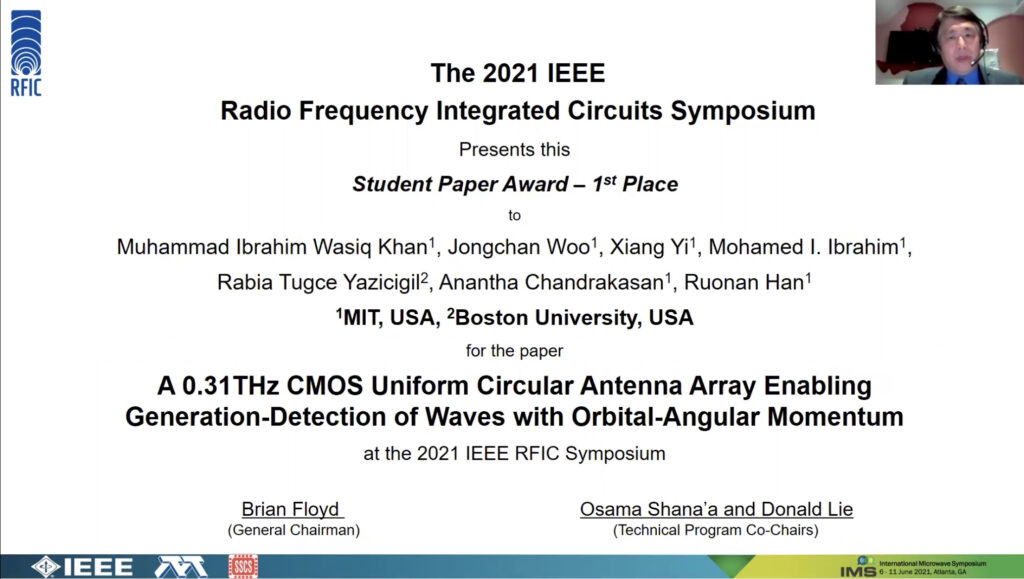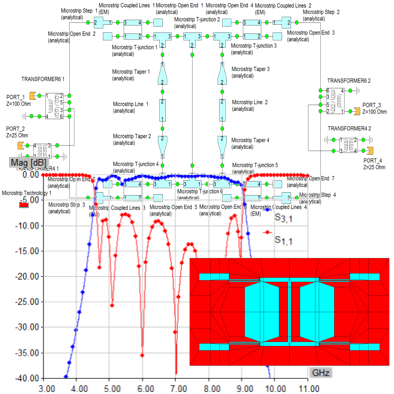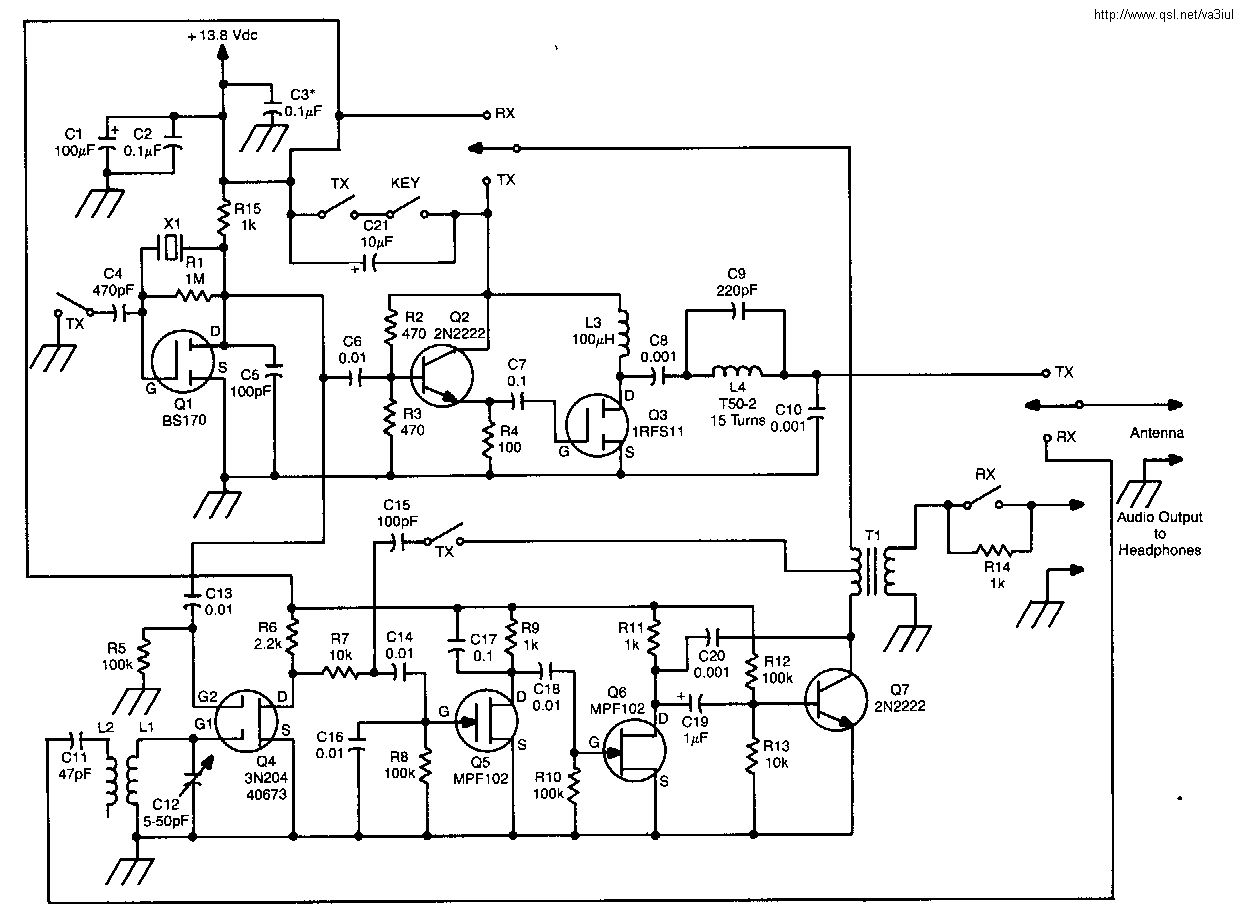
This stage can be either another high-efficiency GaAs pHEMT or a gallium nitride (GaN) HEMT-based MMIC distributed amplifier, depending on the need. The medium-power stage is configured to pick up and amplify the low-power signal.

The low-power stage is a high-efficiency gallium arsenide (GaAs) pseudomorphic high-electron-mobility transistor (pHEMT)-based monolithic microwave integrated circuit (MMIC) distributed amplifier. By contrast, Glenn's design features a wideband multi-stage distributed amplifier system. In standard configurations, conventional MPMs require both a solid-state amplifier at the front end and a microwave vacuum electronics amplifier at the back end. Typically, microwave power modules (MPMs) are useful only for radar and navigation purposes because they lack the linearity and efficiency required for communications. Finally, Glenn's design allows the module to operate in both pulsed and continuous wave modes, so it can singlehandedly drive exceptional performance for radar, navigation, and communications. The performance of this MPM is exceptional, with much higher cut-off frequency and maximum frequency of oscillation than metal-semiconductor-field-effect-transistors offer, and the distributed amplifier's wide bandwidth also results in much faster pulse rise times. Already more compact and lightweight than conventional designs, Glenn's patented technique offers further size reduction by eliminating the need for either a traveling-wave tube amplifier or its accompanying kV-class electronic power conditioner. This MPM is extremely durable and can last a decade or longer. This high-efficiency, all-solid-state microwave power module (MPM) is based on a multi-stage distributed-amplifier design, which is capable of very wideband operation. 2015.Innovators at NASA's Glenn Research Center have developed a microwave power module to power radar, communications, and/or navigation interchangeably. Bistue, “A Dual-Gain Esd-Protected Lna With Integrated Antenna Sensor For A Combined Galileo And Gps Front-End,” Topical Meeting On Silicon Monolithic Integrated Circuits In Rf Systems, Pp. Proceedings of The 28th European Solid-State Circuits Conference, Pp. Groeseneken, “A 1.3 Db Nf Cmos Lna For Gps With 3 Kv Hbm Esd-Protection,” Steyaert, “A 0.8-Db Nf Esd-Protected 9 Mw Cmos Lna Operating At 1.23 Ghz,” IEEE Journal of Solid-State Circuits, Vol. Streit, “Ultra-Low Dc Power Gaas Hbt S-Band Low Noise Amplifiers,” IEEE Microwave And Millimeter-Wave Monolithic Circuits Symposium, Pp. Ishida, “L-Band Internally Matched Si-Mmic Low Noise Amplifier,” Ieee Mtt-S International Microwave Symposium Digest, Vol. Lee, "A 1.5 V, 1.5 Ghz Cmos Low Noise Amplifier,” IEEE Journal of Solid-State Circuits, Vol. Mitchell, “A 2 Mw, Sub-2 Db Noise Figure, Sige Low-Noise Amplifier For X-Band High-Altitude Or Space-Based Radar Applications,” IEEE Radio Frequency Integrated Circuits Symposium, Pp.


Leach, “Fundamentals of Low-Noise Analog Circuit Design,” Proceedings of The IEEE, Vol. Spieler, Semiconductor Detector Systems, Oxford University Press, 2016. Lee, “An Ultra-Wideband Cmos Low Noise Amplifier For 3-5 Ghz Uwb System,” IEEE Journal Of Solid-State Circuits, Vol. Mitchell, “An X-Band Sige Lna With 1.36 Db Mean Noise Figure For Monolithic Phased Array Transmit/Receive Radar Modules,” IEEE Radio Frequency Integrated Circuits Symposium, Pp. Meyer, Analysis And Design Of Analog Integrated Circuits, 4th Edition, John Wiley & Sons, 2011. Freeman, “Sige Hbts For Millimeter-Wave Application With Simultaneously Optimized Ft And Fmax Of 300 Ghz,” IEEE Radio Frequency Integrated Circuits Symposium, Pp. Steyaert, “A 0.8-Db Nf Esd-Protected 9-Mw Cmos Lna Operating At 1.23 Ghz,” IEEE Journal Of Solid-State Circuits, Vol. Cressler, “High Gain, High Linearity, L-Band Sige Low Noise Amplifier With Fully-Integrated Matching Network”, 978-1-4244-5458-7/10/$26.00 © 2010, IEEE.įelix Gunawan, Basuki Rachmatul Alam, “Design And Modulation Analysis Of Cascade Lna For L-Band Very Low Magnitude Signal”, 978-1-5090-5170-0/16/$31.00 ©2016 IEEE. John Chung Hang Poh, Peng Cheng, Tushar K.


 0 kommentar(er)
0 kommentar(er)
